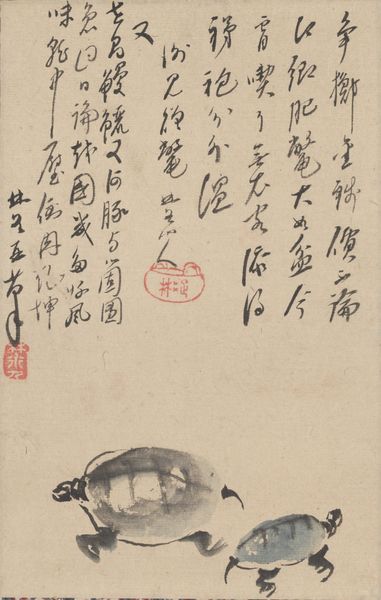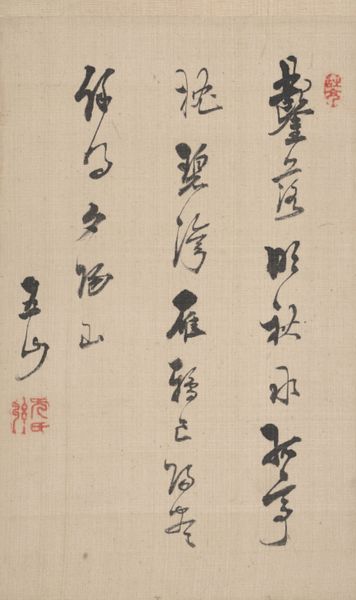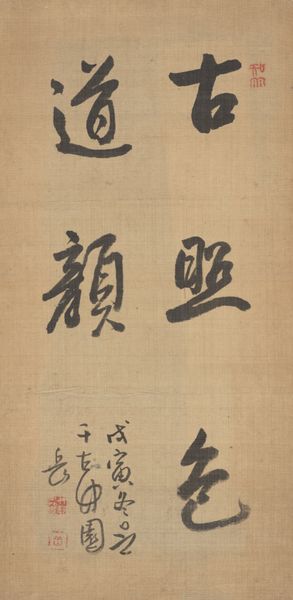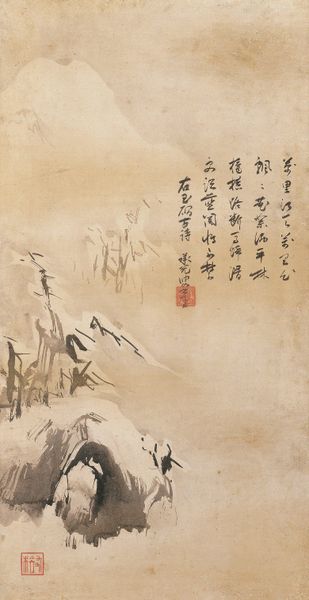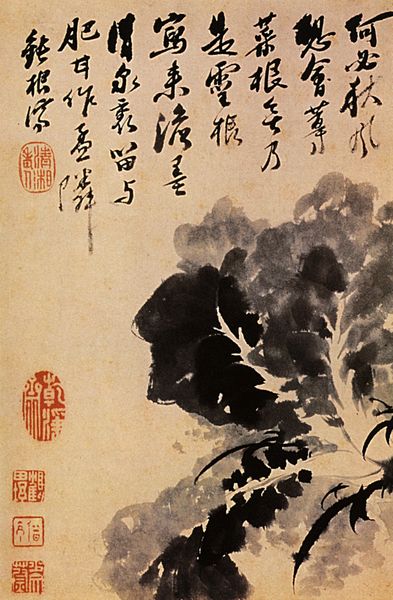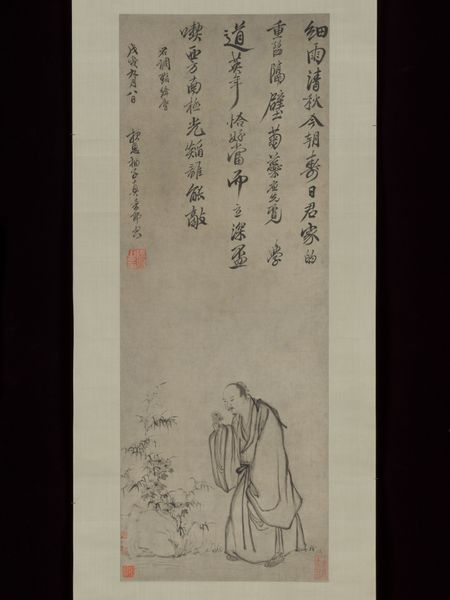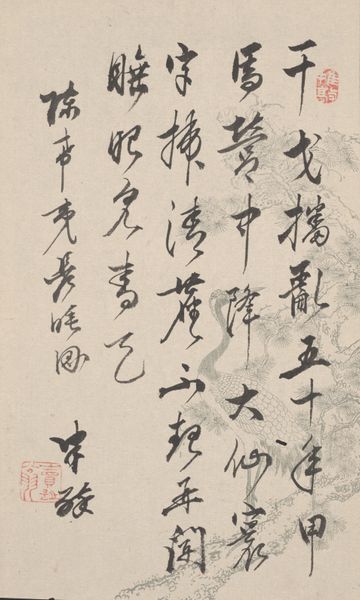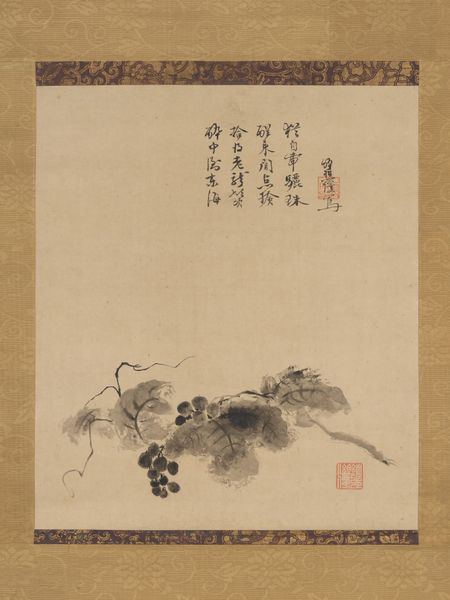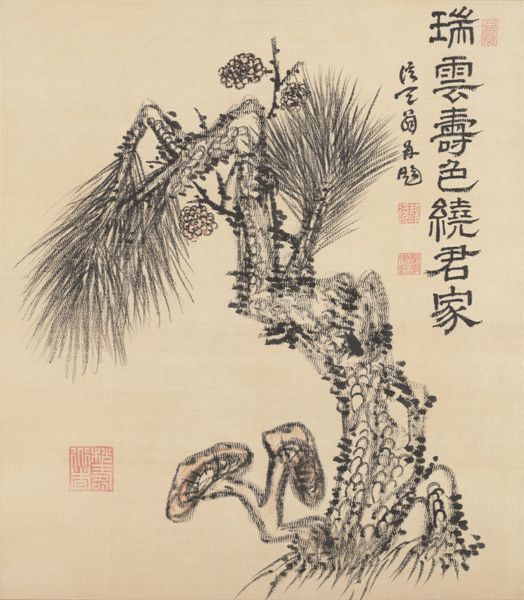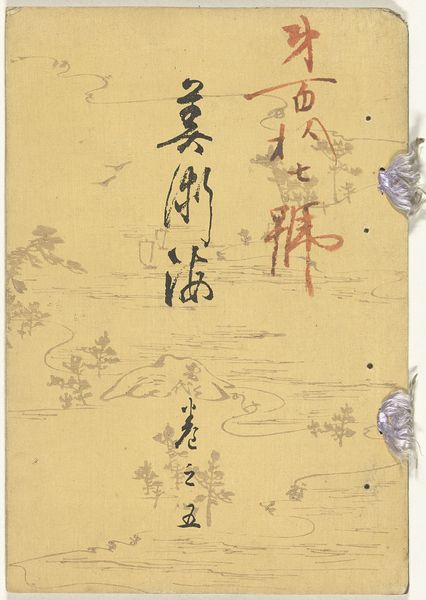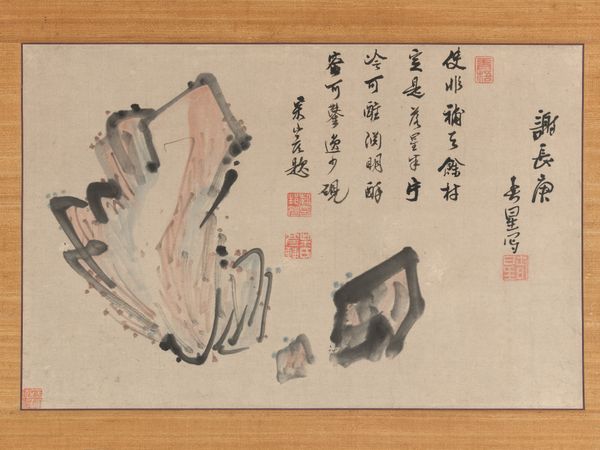
paper, hanging-scroll, ink
#
asian-art
#
landscape
#
paper
#
hanging-scroll
#
ink
#
warm toned
#
china
#
warm-toned
#
watercolour illustration
#
watercolor
#
calligraphy
Dimensions: 52 1/2 x 19 1/16 in. (133.35 x 48.42 cm) (image)75 13/16 x 24 1/2 in. (192.56 x 62.23 cm) (without roller)
Copyright: Public Domain
Curator: This hanging scroll presents us with "Immortal Rock," crafted in 1878 by Wang Yin. It's rendered in ink and color on paper, a classic combination in Chinese painting. What strikes you about it? Editor: It's stark and elegant. The rock form dominates, and yet there's a lot of blank space that gives the whole piece a sense of meditative calm. The brushstrokes appear precise but confident. Curator: Indeed. The very materiality is simple, emphasizing ink wash on paper and its effect on light absorption and reflection. This kind of scholar's rock—a naturally occurring or carefully selected and shaped stone—was much admired by the literati class in China and has a considerable presence in their gardens. It speaks to a desire for connection with the natural world but also represents power and longevity, especially because of its labor to refine. Editor: And the inscription plays a part. It's interesting how the text, or rather the art of calligraphy itself, has the top half of the scroll and interacts directly with our interpretation of the piece as a whole. Curator: Calligraphy was integral to scholarly pursuits. The placement of the poem, with its layers of socio-cultural, literary meaning and historical depth, gives context. Museums were places where these artworks acquired a different function as a showcase of Chinese art, sometimes stripped of social purpose when exhibited outside China. Editor: That is insightful, understanding its function. There's also an intriguing tension here, this deliberate combination of "raw" natural material that goes hand-in-hand with the refined art form. Curator: Right. We could see this from a consumption point of view, as art became collectible commodities or from a creative point of view. Editor: This encounter provides insights not only on aesthetics but the ways through which values such as longevity or power are expressed. Curator: It also allows us to understand that art serves its community but, perhaps surprisingly, reveals humanity through nature.
Comments
minneapolisinstituteofart almost 2 years ago
⋮
Wang Yin was born in NanJing, Jiangsu province but worked primarily in Shanghai. Although a professional artist he espoused literati values and published manuals on plum, orchid, bamboo and rock painting. This classic taihu garden rock represents the Daoist embodiment of changefulness; its rhythmic form is pierced through with holes large and small suggesting the rigors and erosion of time. The inscription by Wang reads: When the phoenix flew away, heaven turned cold and the green "Wutong" tree died as did the grass. The rock perch alone remained; it stood in the clouds and awaited the ordinary birds. The phoenix call at sunrise lasted three thousand years. It was the end of the world. I often stop playing the "Qin" under the moonlight. It seems an immortal has emerged from the moon. Done by Wang Yemei in winter; twelfth month, 1878 at Kyoto.
Join the conversation
Join millions of artists and users on Artera today and experience the ultimate creative platform.
